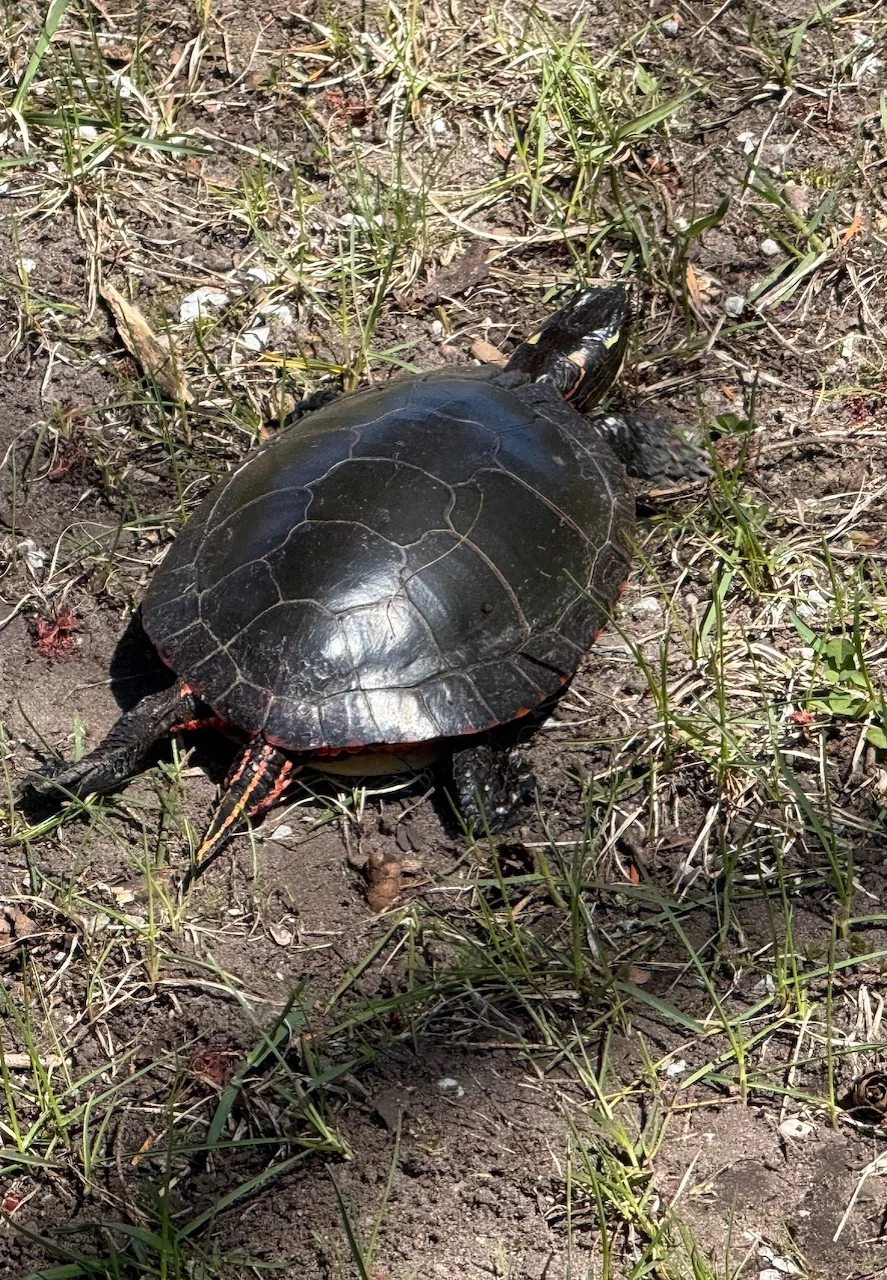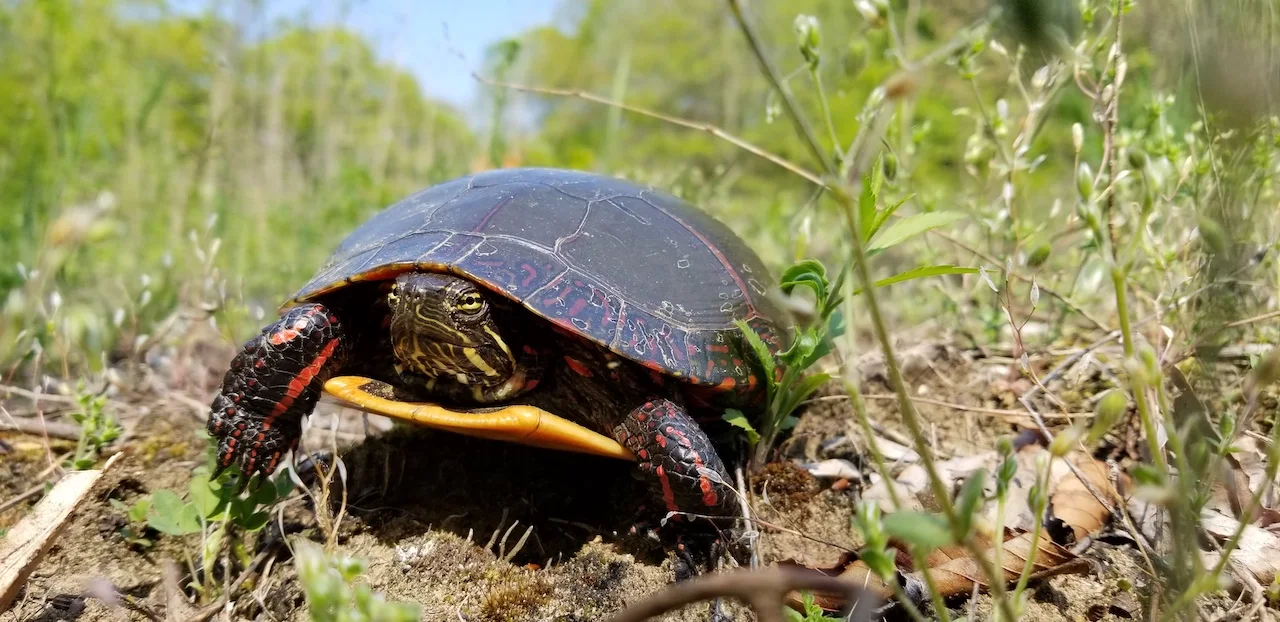
Taxi program goes the distance to pick up and rehab hurt turtles
Road mortality is one of the biggest threats to Canada's native, freshwater turtles, which are all considered at risk, so a volunteer-based Quebec program is aiming to reduce the hazard to the reptiles with roadside pickup for injured individuals
Every turtle we lose is more than just the loss of that one individual. Because of the length of time it can take a female to reproduce, the death of a turtle means the potential loss of decades' worth of eggs.
With road mortality as one of the biggest threats to Canada's native, freshwater turtles, which are all at risk, a volunteer Quebec initiative aims to change that with roadside pickup.
RELATED: This can be a deadly time for one of Canada's 'most endangered' wildlife groups
Taxi Carapace is a volunteer transportation service that safely and quickly moves the turtles in distress to the Centre de réhabilitation des tortues du Québec (CRTQ), located at the Centre d’exploration du Parc de la Rivière-des Mille-Îles, in Laval, Que.
Francisco Retamal-Diaz, project manager with the Nature Conservancy of Canada (NCC), said once people started reporting injured turtles to the centre, the challenge that surfaced was finding a way to transport the reptiles to the facility. That's when the idea of the Taxi Carapace was born.

Taxi Carapace infographic. (Nature Conservancy of Canada (NCC)/Submitted to The Weather Network)
"It encourages people who see injured turtles to remain in place and to call them, so they can have a guide or a read-through on how to take care of this turtle, and if they can bring them to, for example, a veterinarian or transport the injured turtles," said Retamal-Diaz, in a recent interview with The Weather Network.
"Unfortunately, with such a fast-moving landscape that we [have] now created, the turtles have not adapted their reproductive strategies. So, this is why we need to help them."
More than 3,000 kilometres covered to find injured turtles
Last year, 93 turtles were released and more than 1,000 turtle sightings were reported, according to NCC. Since the Taxi Carapace initiative was launched, more than 50 volunteers have joined to help release 32 of the 93 turtles that were rehabilitated.
The volunteers have covered a distance of 3,600 kilometres to retrieve and return turtles, including one individual who drove 400 kilometres to release a single animal.

Painted turtle. (Nathan Howes/The Weather Network)
In 2023, nearly 1,800 turtle sightings were reported to the centre, bringing the total number of reports to close to 11,800, according to NCC.
"This gives you an indication that they're not always able to take care of all the turtles. Some turtles can die from their wounds. But, it gives you at least a little proportion of that. There are, at least, up to 100 turtles every year that are taken care of in the centre. Usually, we receive at least 1,000 sightings of turtles every year," said Retamal-Diaz.
The volunteers then transport the cared-for turtles back to their natural habitat, ensuring their safe reintroduction, NCC said. People interested in becoming a volunteer can fill out an online form (in French).

Painted turtle. (Cameron Curran/Nature Conservancy of Canada (NCC)/Submitted to The Weather Network)
"Bring them as close as possible to the centre and [we'll] have another volunteer pick the turtle up, and continue [the journey]. You don't have to go so [many] kilometres while transporting the turtles," said Retamal-Diaz.
RELATED: World Turtle Day: Road mortality a top threat in Canada in May and June
Turtles face numerous threats, but road mortality is the greatest concern
All eight of Canada's freshwater turtle species or subspecies have a special status, whether it's threatened, vulnerable or endangered.
"They all face major threats," said Retamal-Diaz.
The survival rate of turtle eggs is very low, he said, with only two per cent of them estimated to reach adulthood.

Northern map turtle. (Warren Howes/Submitted to The Weather Network)
"Every year the females nest and try to have successful hatchlings, well, they face the threat from [road] mortality. It's a big threat for turtles, and they're all in danger," said Retamal-Diaz. "That's why it's important for the Nature Conservancy [of Canada] and for every citizen [to] do something to try and help the turtle population."
How to report and handle an injured turtle
Folks in Quebec can report a turtle sighting online on carapace.ca (in French). People can find instructions on how to handle a turtle on the website, as well.
However, if the animal is visibly in distress, it's best to stay by it and contact the CRTQ (450-622-1020 ext. 286).
"It encourages people who see injured turtles to remain in place, and to call [the centre] so they can have a guide or a read-through on how to take care of this turtle, and if they can bring them to, for example, a vet, or transport the injured turtles," said Retamal-Diaz.

(Getty Images)
"If you see a turtle that is injured in the area, but the volunteer is not able to transport them, they will call you and ask you if you are able to. It's possible to have a shuttle if you want."
WATCH: Loonie-sized turtles in danger during cherry blossom season
Thumbnail created by Cheryl Santa Maria using CANVA.
